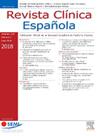西班牙成人苯丙酮尿症患者的临床特征和管理
IF 1.7
4区 医学
Q2 MEDICINE, GENERAL & INTERNAL
引用次数: 0
摘要
目的描述在中心、服务和参考单位(CSUR)或专门治疗先天性代谢错误(IEM)的临床卓越单位随访的苯丙酮尿(PKU)患者的社会人口学、临床特征和管理。此外,确定患者健康相关生活质量(HRQoL)。方法对研究期间在CSUR中心或IEM专业临床卓越单位就诊的西班牙PKU患者进行观察性、横断面、描述性研究。结果本研究共纳入55例不同PKU表型的患者,其中成人54例,青少年1例。平均(SD)年龄为32.1(9.7)岁,其中69.1%为女性。诊断时最常见的表型为经典PKU(67.3%)。诊断时血浆Phe平均(SD)水平分别为901.9 (606.1)μmol/L和422.8 (288.9)μmol/L。23.6%的患者出现神经系统症状,最常见的是智力残疾(21.8%)。34.5%的患者存在心理症状,最常见的是焦虑(14.5%)和抑郁(12.7%)。85.5%的患者回答了EQ-5D-5L问卷。其中,44.7%的患者没有焦虑或抑郁,而34.0%的患者有轻度焦虑或抑郁。平均(SD) EQ-VAS值为80.9(15.2)。41例(74.5%)患者对PKU-QoL问卷有应答。结果表明,PKU患者认为其疾病的影响在问卷中包括的所有领域都是中等的。结论:PKU患者可能会出现神经系统或心理症状,包括智力障碍、焦虑和抑郁。然而,他们的HRQoL被发现是良好的,与一般人群相当。本文章由计算机程序翻译,如有差异,请以英文原文为准。
Características clínicas y manejo de los pacientes españoles adultos con fenilcetonuria
Objectives
To describe the sociodemographic and clinical characteristics and management of patients with phenylketonuria (PKU) followed in centres, services, and reference units (CSUR) or clinical excellence units specialised in inborn errors of metabolism (IEM). Additionally, to determine patients’ health-related quality of life (HRQoL).
Methods
Observational, cross-sectional, descriptive study conducted with Spanish PKU patients attending CSUR centres or clinical excellence units specialised in IEM during the study period.
Results
The study included 55 patients (54 adults and one teenager) with different PKU phenotypes. The mean (SD) age was 32.1 (9.7) years, with 69.1% women. The most frequent phenotype at diagnosis was classical PKU (67.3%). Mean (SD) plasma Phe levels at diagnosis were 901.9 (606.1) μmol/L and 422.8 (288.9) μmol/L in the last year. Neurological symptoms were present in 23.6% of patients, the most frequent being intellectual disability (21.8%). Psychological symptoms were present in 34.5% of patients, the most frequent being anxiety (14.5%) and depression (12.7%). Of the patients, 85.5% responded to the EQ-5D-5L questionnaire. Of these, 44.7% of patients reported no anxiety or depression, while 34.0% had mild anxiety or depression. The mean (SD) EQ-VAS value was 80.9 (15.2). Forty-one (74.5%) patients responded to the PKU-QoL questionnaire. The results indicated that PKU patients perceived the impact of their disease to be moderate across all domains included in the questionnaire.
Conclusions
Adults with PKU may experience neurological or psychological symptoms including intellectual disability, anxiety, and depression. However, their HRQoL was found to be good and comparable to that of the general population.
求助全文
通过发布文献求助,成功后即可免费获取论文全文。
去求助
来源期刊

Revista clinica espanola
医学-医学:内科
CiteScore
4.40
自引率
6.90%
发文量
73
审稿时长
28 days
期刊介绍:
Revista Clínica Española published its first issue in 1940 and is the body of expression of the Spanish Society of Internal Medicine (SEMI).
The journal fully endorses the goals of updating knowledge and facilitating the acquisition of key developments in internal medicine applied to clinical practice. Revista Clínica Española is subject to a thorough double blind review of the received articles written in Spanish or English. Nine issues are published each year, including mostly originals, reviews and consensus documents.
 求助内容:
求助内容: 应助结果提醒方式:
应助结果提醒方式:


